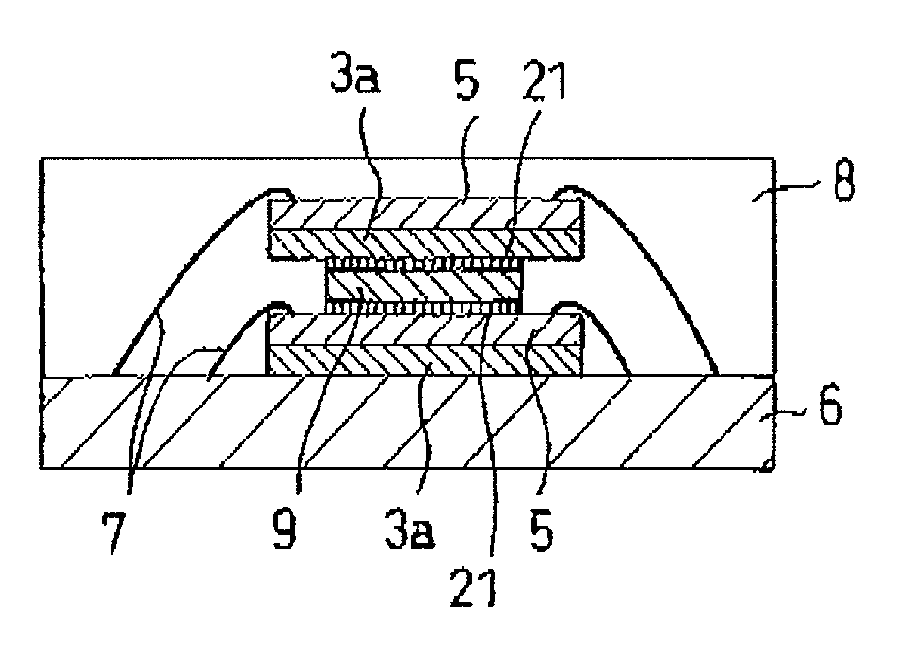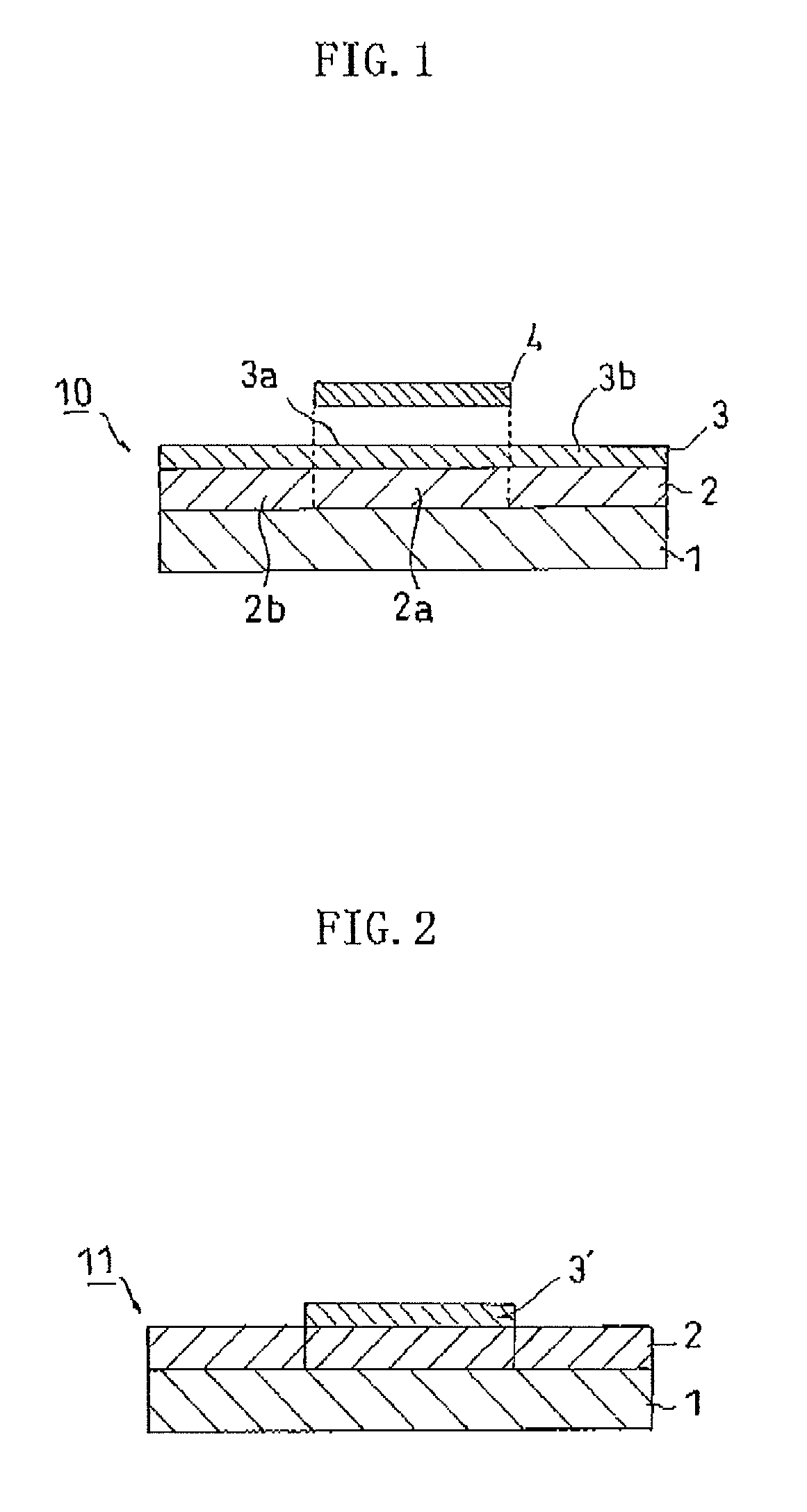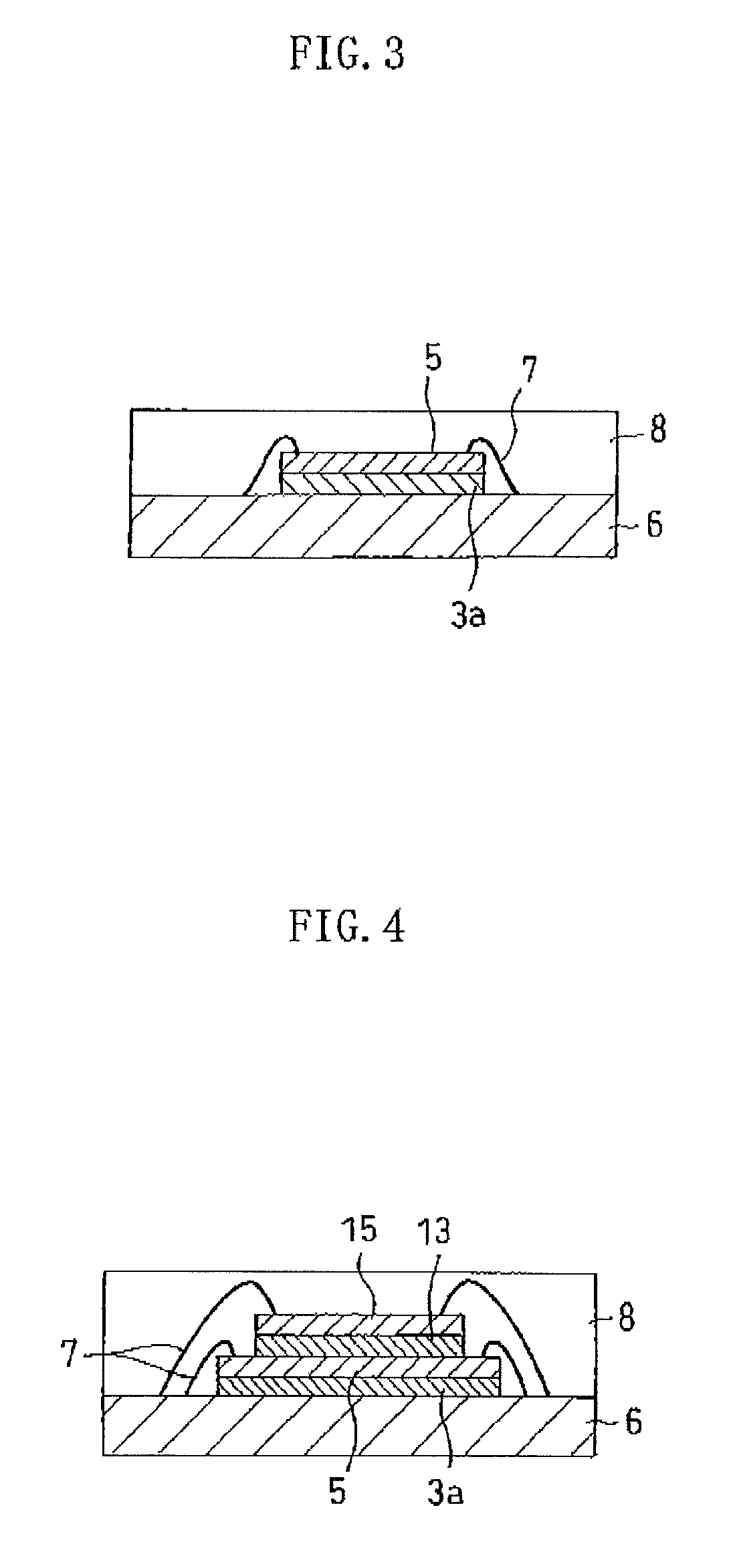Thermosetting die-bonding film
a technology of die-bonding film and die-bonding film, which is applied in the direction of transportation and packaging, synthetic resin layered products, chemistry apparatus and processes, etc., can solve the problems of poor reliability of bonding a semiconductor chip, low bonding strength between the electrode member and the semiconductor chip, and poor characteristic, so as to prevent the generation of voids and reduce the number of pickup steps. , the effect of high reliability
- Summary
- Abstract
- Description
- Claims
- Application Information
AI Technical Summary
Benefits of technology
Problems solved by technology
Method used
Image
Examples
example 1
[0112]An adhesive composition having a concentration of 23.6% by weight was prepared by dissolving 144 parts of an epoxy resin 1 (EPIKOTE 1004 manufactured by Japan Epoxy Resins Co., Ltd.), 130 parts of an epoxy resin 2 (EPIKOTE 827 manufactured by Japan Epoxy Resins Co., Ltd.), 293 parts of a phenol resin (MILEX XLC-4L manufactured by Mitsui Chemicals, Inc.), 444 parts of sphere-shaped silica (SO-25R manufactured by Admax Co., Ltd.) and 2 parts of a curing catalyst (C11-Z manufactured by Shikoku Chemicals Corporation) based on 100 parts by weight of an acrylic ester polymer (Parakuron W-197CM manufactured by Negami Chemical Industrial Co., Ltd.) containing ethyl acrylate-methylmethacrylate as a main component into methylethylketone.
[0113]This solution of the adhesive composition was applied onto a release treated film made of a polyethylene terephthalate film having a thickness of 50 μm on which a silicone releasing treatment was performed as a releasing liner, and it was dried at ...
example 2
[0114]An adhesive composition having a concentration of 23.6% by weight was prepared by dissolving 126 parts of an epoxy resin 1 (EPIKOTE 1004 manufactured by Japan Epoxy Resins Co., Ltd.), 68 parts of an epoxy resin 2 (EPIKOTE 827 manufactured by Japan Epoxy Resins Co., Ltd.), 206 parts of a phenol resin (MILEX XLC-4L manufactured by Mitsui Chemicals, Inc.), 333 parts of sphere-shaped silica (SO-25R manufactured by Admax Co., Ltd.), and 1.5 parts of a curing catalyst (C11-Z manufactured by Shikoku Chemicals Corporation) based on 100 parts by weight of an acrylic ester polymer (Parakuron W-197CM manufactured by Negami Chemical Industrial Co., Ltd.) containing ethyl acrylate-methylmethacrylate as a main component into methylethylketone.
[0115]This solution of the adhesive composition was applied onto a release treated film made of a polyethylene terephthalate film having a thickness of 50 μm which a silicone releasing treatment was performed as a releasing liner, and it was dried at 1...
PUM
| Property | Measurement | Unit |
|---|---|---|
| surface free energy | aaaaa | aaaaa |
| surface free energy | aaaaa | aaaaa |
| tensile storage modulus | aaaaa | aaaaa |
Abstract
Description
Claims
Application Information
 Login to View More
Login to View More - R&D
- Intellectual Property
- Life Sciences
- Materials
- Tech Scout
- Unparalleled Data Quality
- Higher Quality Content
- 60% Fewer Hallucinations
Browse by: Latest US Patents, China's latest patents, Technical Efficacy Thesaurus, Application Domain, Technology Topic, Popular Technical Reports.
© 2025 PatSnap. All rights reserved.Legal|Privacy policy|Modern Slavery Act Transparency Statement|Sitemap|About US| Contact US: help@patsnap.com



